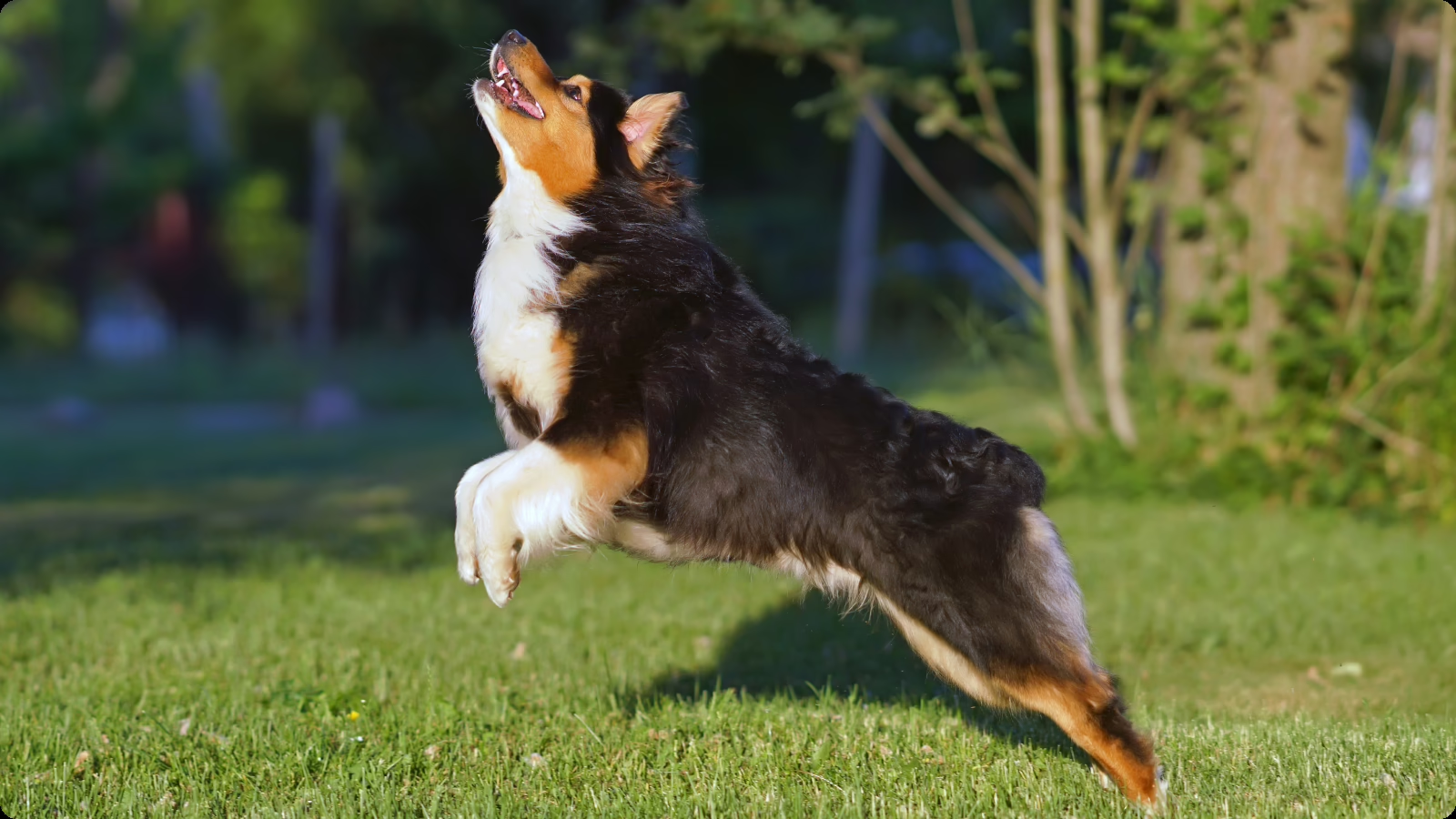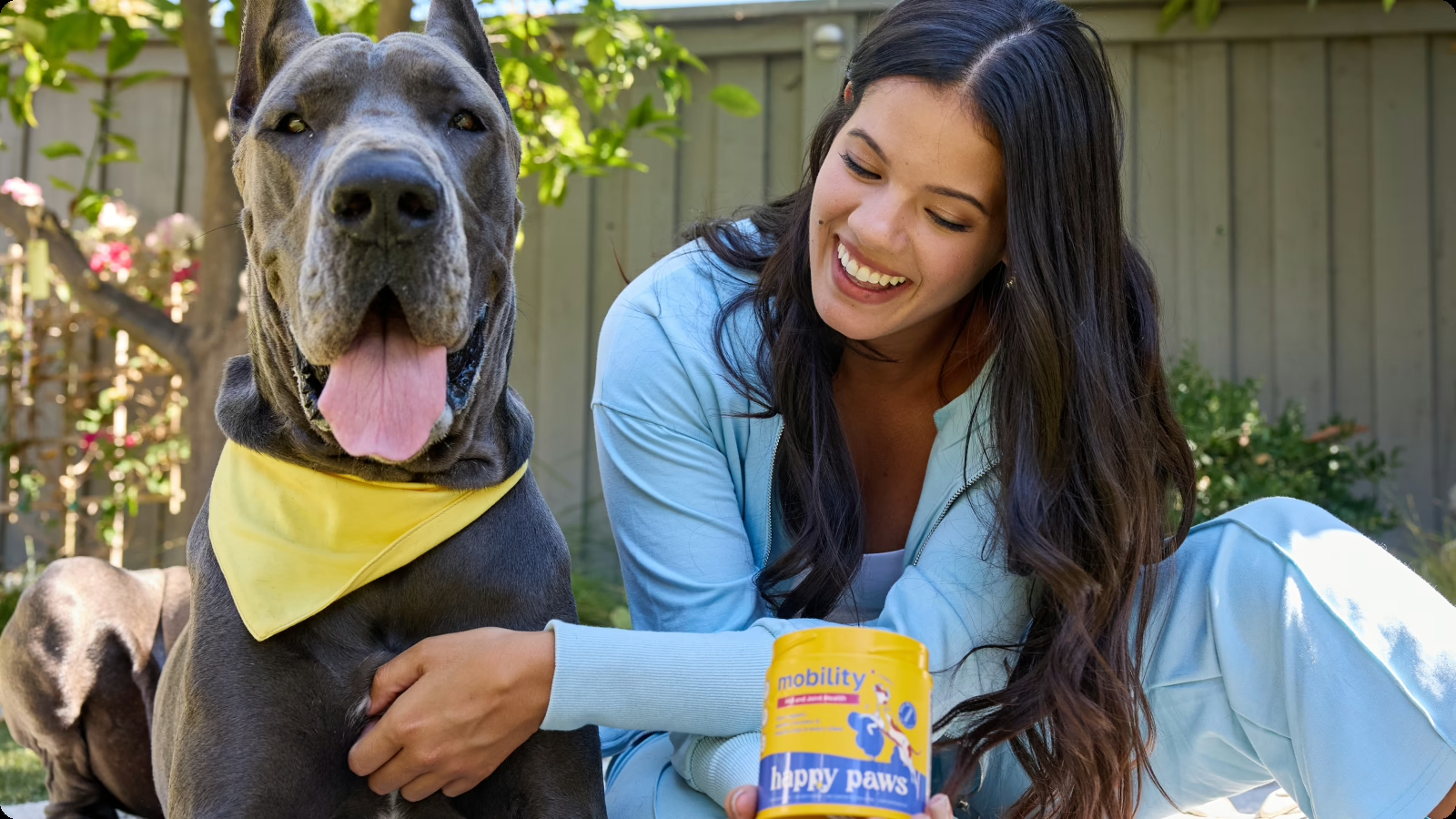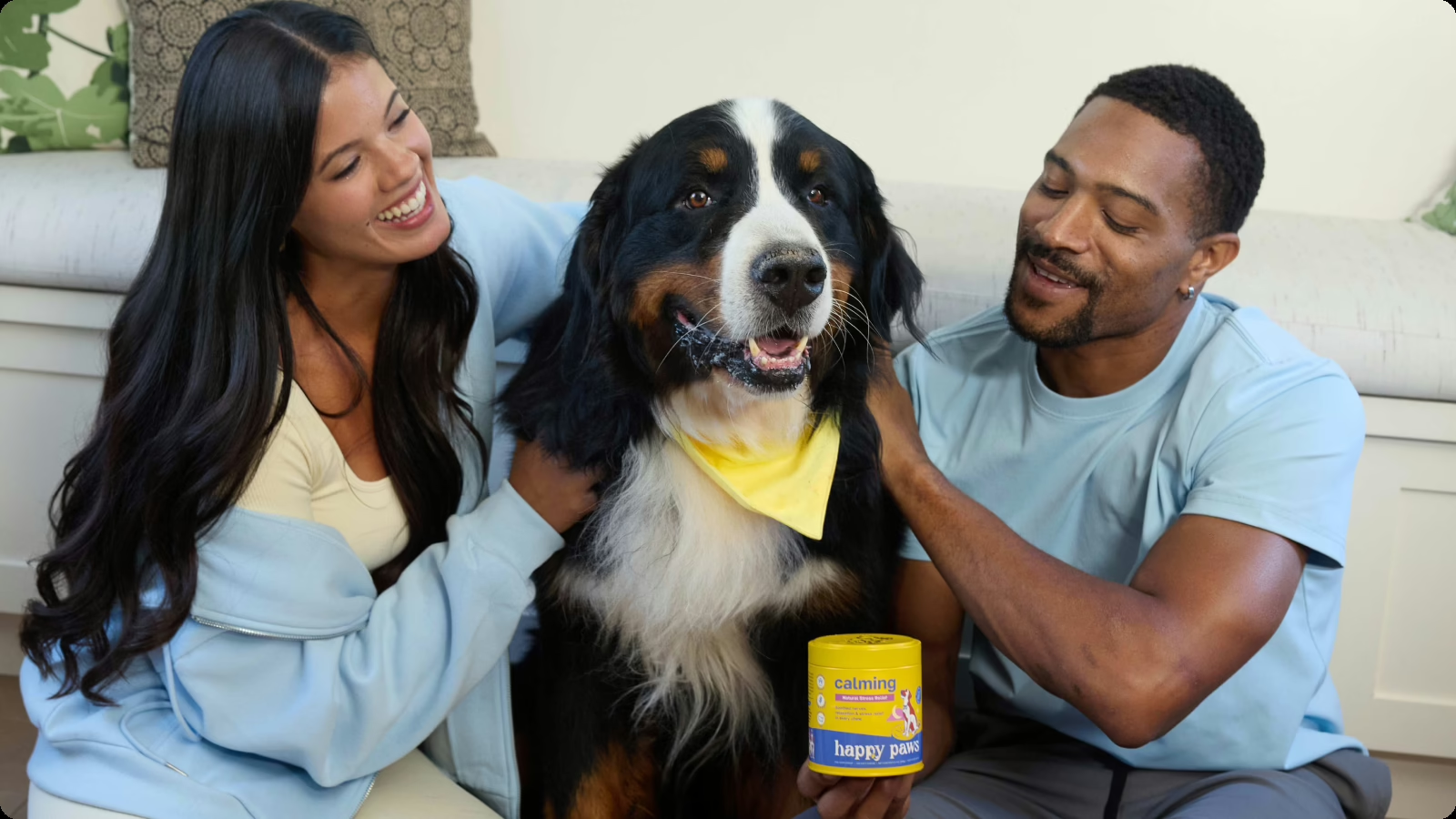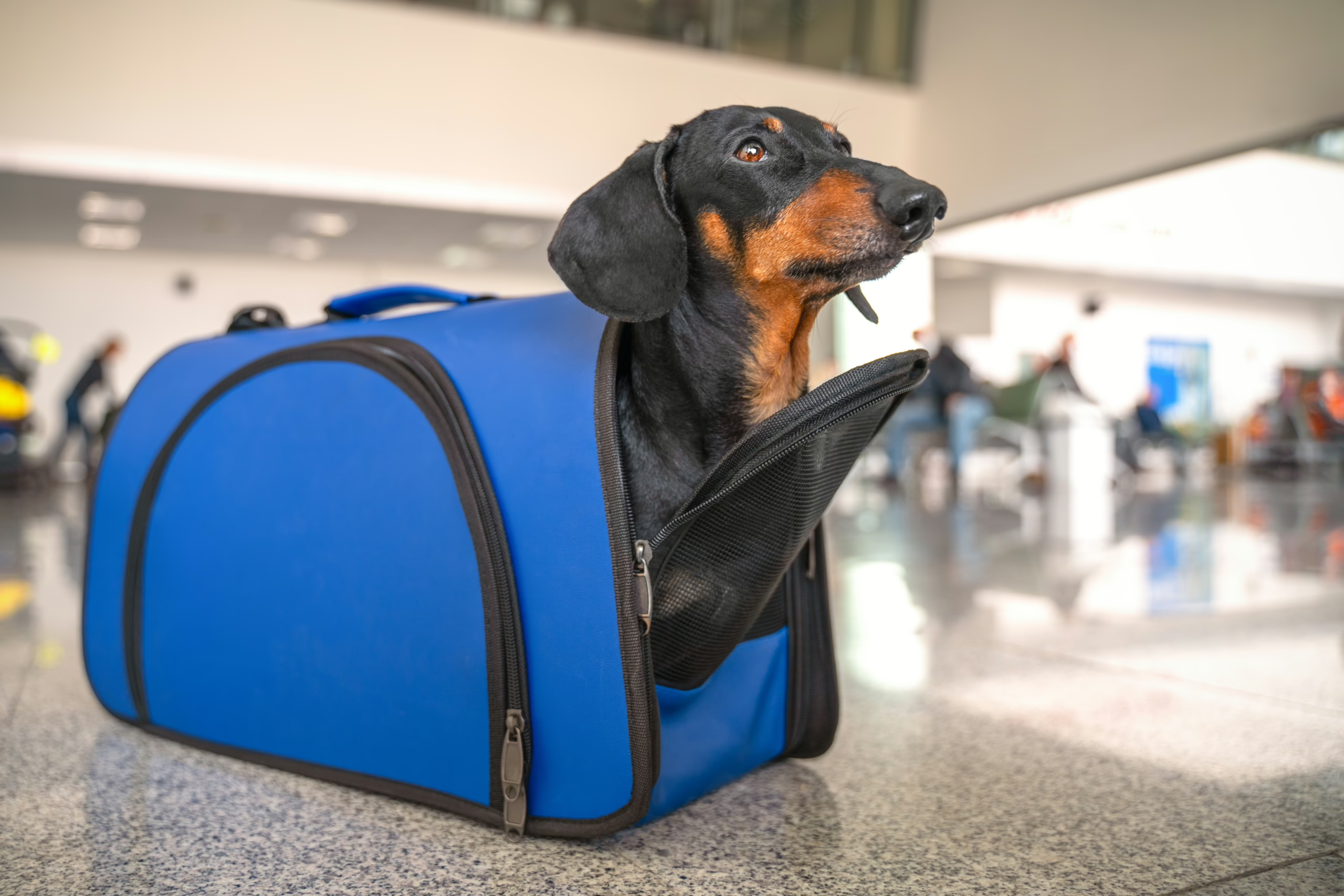How many dogs have dental disease?
Well, according to The Animal Kennel Club (AKC), up to 90% of dogs over two years old show signs. Dental disease can cause more than just smelly breath. It can affect major areas, like your dog’s heart, kidneys, and more. So, how do you treat it, and better yet, how do you prevent dental disease in dogs? Let’s dig in.
When your dog leans in to give you a big ’ole face lick, you might be greeted with more than just a slobbering, wet tongue. “Doggy breath” can encapsulate a ton of different smells, from benign aromas to downright rank stinks. Depending on what your dog’s gotten into, whether it’s trash, dirt, or an unfortunate case of coprophagia, your dog’s breath can sometimes clear a room. But their breath might not only hint at what they’ve eaten recently. Smelly dog breath can be a leading indicator of dental dilemmas that, if left untreated, can cause a number of canine concerns further down the road.
Here, we’ll unpack what dental disease is in dogs, show you what to look for, when to seek treatment, and popular ways to help prevent it at home. Your dog may have an infectious smile, and with proper dental care, daily dental cleanings, and routine vet visits, you can help keep their pearly whites healthy.
Why Oral Health Matters
Your dog’s oral health is much like ours. The food they eat can build up around their teeth and gums, hardening first into plaque. If this plaque isn’t removed fast enough, it can solidify even further, becoming a caulk-like compound called tartar: a brownish-yellow substance. Older dogs can have tartar caked on their teeth for years, typically on their side molars. Over time, as more plaque builds up and hardens, tartar can expand, pushing back your dog’s gums. This is where vets see the first signs of trouble.
Your dog’s oral health matters because, if left untreated, poor periodontal health can lead to periodontal disease, which is known to impact a number of your dog’s systems, like their heart and kidneys. And as we mentioned, the first sign is receding gums, also known as gingivitis.
What Is Periodontal Disease?
Periodontal disease starts as gingivitis, but as the tartar, plaque, and bacteria expand past the gumline, it can create periodontal pockets under the gums that trap even more bacteria, spreading even closer toward the jawbone. This is known as periodontitis, and it can lead to a number of issues, like tooth loss, tooth decay, and even kidney disease. If caught early enough, periodontal disease is manageable and even treatable. But, if it’s caught in later stages, where bone or tooth loss has occurred, periodontal disease may be harder to reign in.
Signs of Periodontal Disease in Dogs
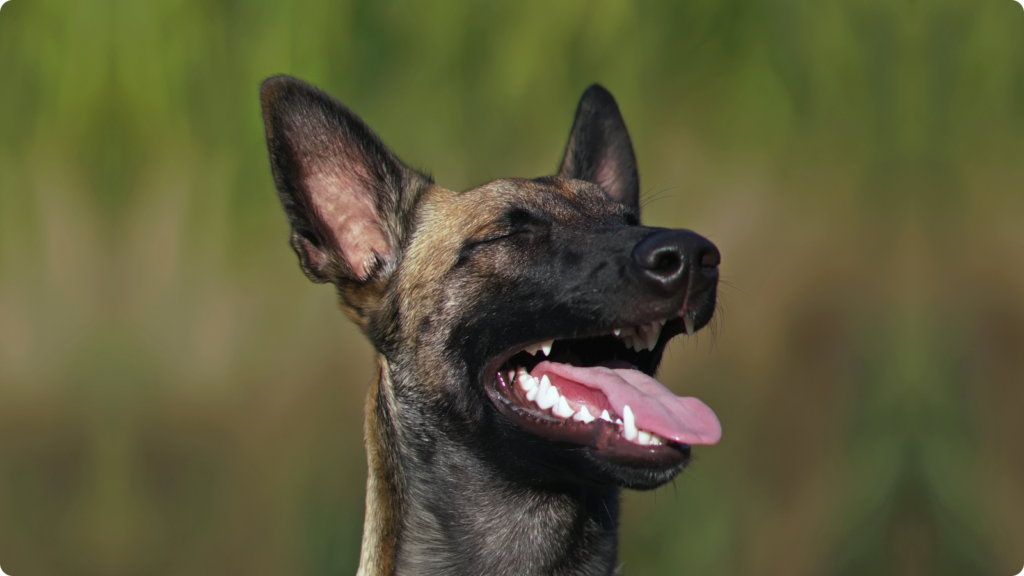
Before we discuss the common signs of periodontal disease in dogs, a quick word about proper treatment and care. If your dog is showing any of these signs, it’s always best to consult a veterinarian before considering at-home treatment. Vets are our best friends; they should be your dog’s, too!
Halitosis
Halitosis (bad breath) is one of periodontal disease’s most common (and recognizable) symptoms. It may surprise some pet parents, but dogs aren’t supposed to have bad breath year-round, especially if they eat the same meals every day. So, if your dog consistently has hot, stinky breath, it’s best to consult your veterinarian.
Inability to Chew Hard Food
When they’re puppies and wily young adults, dogs love to chew, chew, and chew. Some dogs love the crunch of carrots, ice chips, and cucumbers. At that age, their teeth are hard enough to chomp through most any types of healthy, dog-safe hard foods. But, if they have periodontal disease, your dog might be hesitant to dig their chompers into hard, crunchy foods due to dental pain. So, if your dog steers clear of chomping down on hard food they once loved, it might be time to consult your veterinarian.
Excessive Drooling Caused by Gingivitis
Some bigger dogs drool at the sight of food, when they’re overheated, or just cause. Drooling on occasion is normal in most dogs. But when your dog starts drooling excessively, it may raise some alarm. Gingivitis (gum disease) can be the cause of excessive drooling. In many cases, gingivitis is an early sign of periodontal disease in dogs. However, gingivitis is not the only cause of drooling. So, if you notice your dog is drooling more regularly, it might be time to schedule a veterinary consultation.
Irritability
For some dogs, periodontal disease can be painful and irritating, resulting in a pupper who’s not always up for playtime. Dogs with sore gums and teeth might be moody and irritable. They may even guard their mouths when you reach in to check their teeth. So, if your dog has tooth sensitivity or random irritability, it might be best to seek veterinary care.
Refusal to Eat
Periodontal pain may even lead your dog to ignore their food, regardless of whether it’s hard or soft food. But periodontal disease isn’t the only cause of low appetites. So, if your dog is refusing to eat, it’s best to consult your veterinarian.
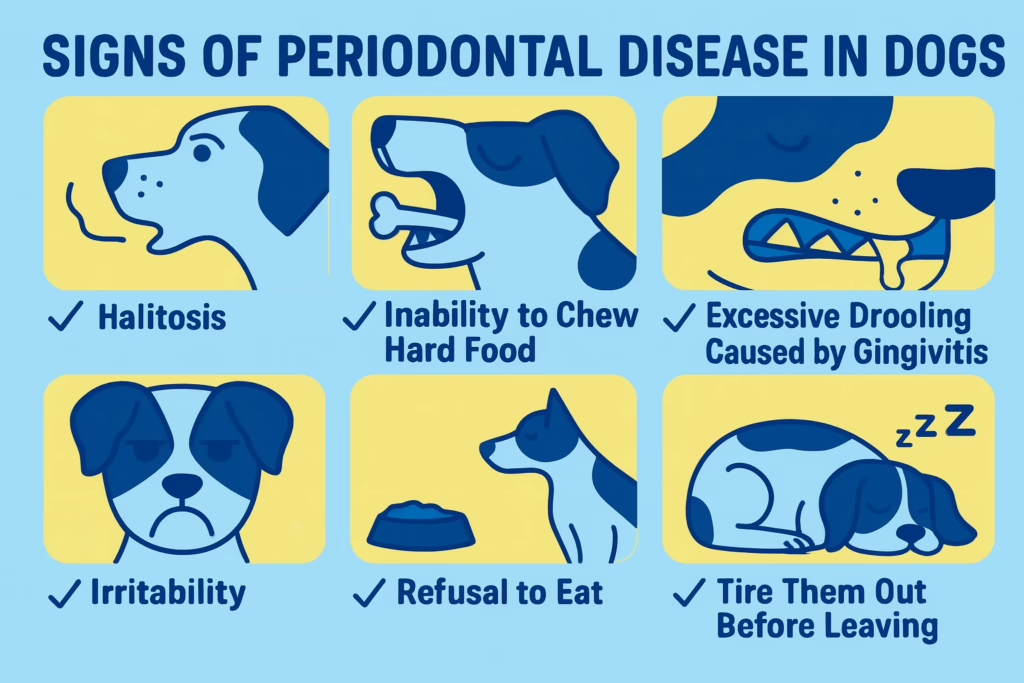
Daily Dental Care Checklist
To help keep your dog’s dental health in tip-top shape, here are a few steps you can do daily to refresh their breath and fight plaque and tartar build-up: the two main culprits behind periodontal disease.
1. Daily Dental Cleanings
Just like us, dogs need their teeth cleaned daily—yes, daily. It was once thought that dogs needed weekly brushing or even bi-weekly. But that advice has since been updated. These days, the AKC recommends brushing your dog’s teeth three times a week at minimum. And it’s important to find the right dog-friendly toothbrush and toothpaste for them.
For smaller dogs, look for toothbrushes with smaller heads. For bigger dogs, go with a larger-head toothbrush. Also, find a dog-friendly toothpaste your pup loves. While they do have classic options, like spearmint, there are a handful of other toothpaste flavors your dog might love more, like chicken, beef, and lamb.
If it’s your first time brushing your dog’s teeth, it’s best to start gently. Let them sniff the brush and toothpaste. Then, once your dog is comfortable, gently brush side to side, targeting the spots where the tooth meets the gums. Once you’re done, it might be best to reward your dog with a treat, just for being a well-behaved pup.
2. Routine Teeth & Gums Inspection
While we’ve mentioned this a number of times, it bears repeating that you should take your dog in to see a veterinarian for routine periodontal inspections. Your vet will be able to check your dog’s gum and teeth health and spot any early signs of periodontal disease. They may even recommend a tailored approach to prevent any worsening symptoms.
3. Dental Treats & Supplements
Another popular option many pet parents turn to is dog dental supplements. While some pet owners use these supplements to refresh their dog’s breath, these supplements can do more than just that. High-quality dog dental chews can freshen breath, strip away plaque, break up tartar, and even promote gut health and function. While these shouldn’t be your sole solution for doggy dental care, they do very well in a multi-step periodontal care checklist.
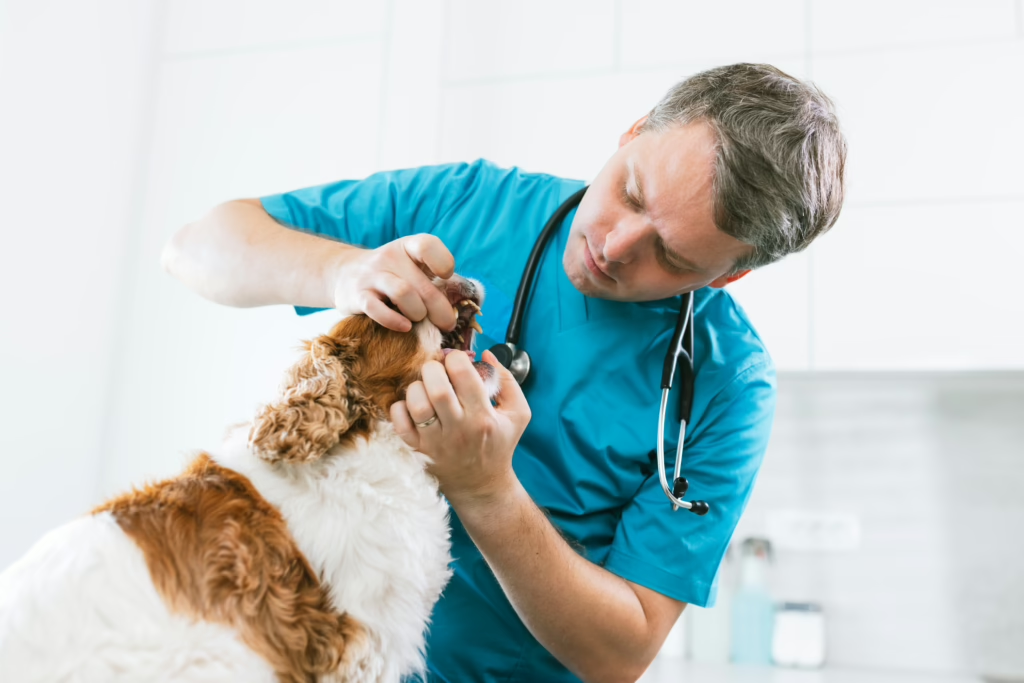
Happy Paws Dental Dog Chews
Our Dental Dog Chews come with a stacked list of ingredients to reinforce your dog’s periodontal health. While spearmint and fennel help freshen your dog’s breath, an enzyme blend fights off plaque build-up, and P-6 probiotics promote better digestion. Just add these chews to your dog’s breakfast or dinner, or give it to ’em as a standalone treat!
Parting Thoughts
Many pet parents have heard of periodontal disease, but they probably didn’t know how common it was. While periodontal disease is treatable in most cases, it’s likely preventable in all. So, if you want to help keep your dog’s pearly whites healthy throughout their lives, it’s best to regularly brush their teeth, go in for routine vet visits, and give ’em a daily dental supplement to top it all off.

